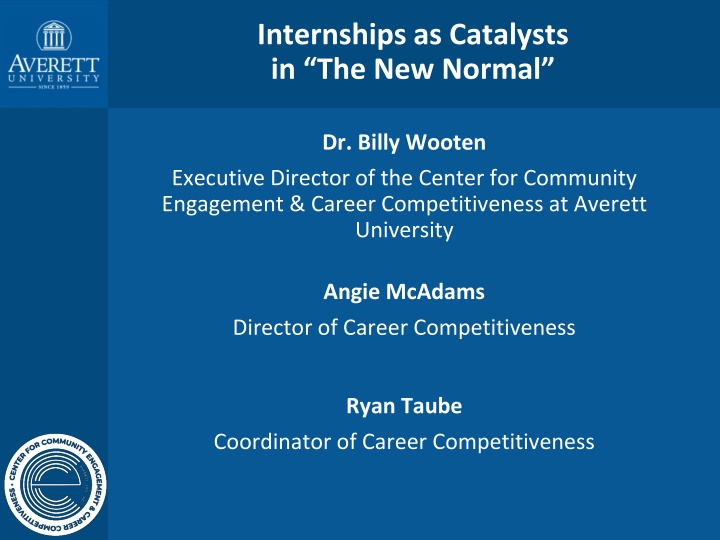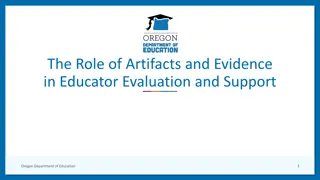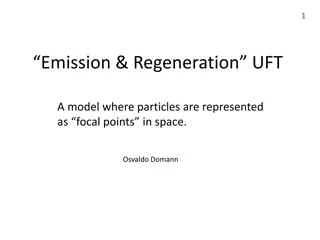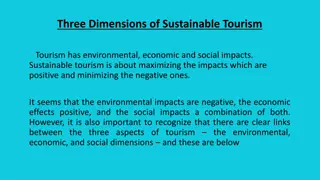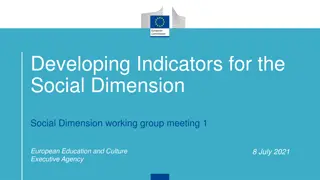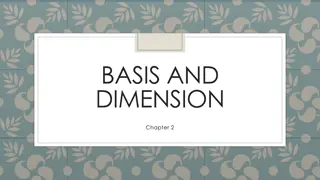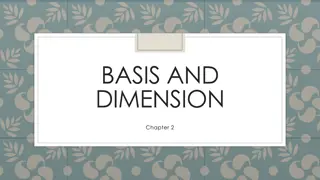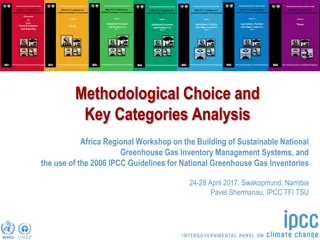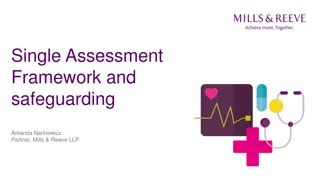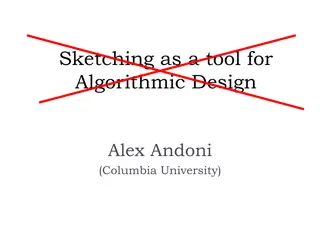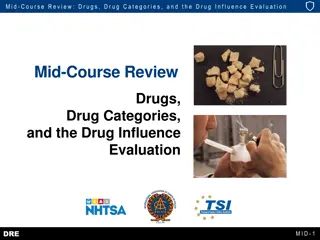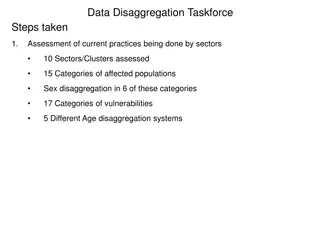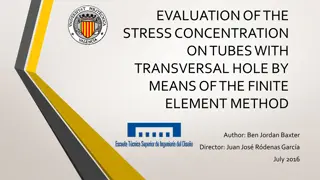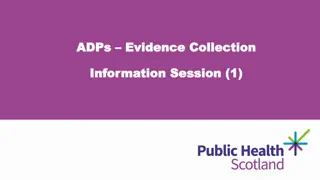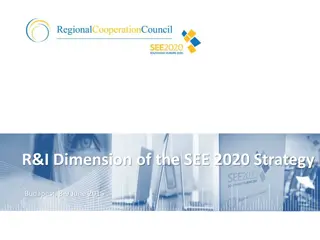Transversal Dimension in HEPAS Model: Key Categories and Evidence
The transversal dimension in the HEPAS model encompasses themes cutting across settings and elements, influencing school events, professional development, facilities, resources, and community partnerships. This dimension includes categories like inclusion and diversity, continuous professional development, facilities and resources, and community partnerships. Studies emphasize the importance of staff training, school infrastructure, community connections, and extracurricular activities for achieving a Healthy and Physically Active School. The content highlights the significance of these factors in promoting physical activity and creating active, safe, and inclusive school environments.
Download Presentation

Please find below an Image/Link to download the presentation.
The content on the website is provided AS IS for your information and personal use only. It may not be sold, licensed, or shared on other websites without obtaining consent from the author.If you encounter any issues during the download, it is possible that the publisher has removed the file from their server.
You are allowed to download the files provided on this website for personal or commercial use, subject to the condition that they are used lawfully. All files are the property of their respective owners.
The content on the website is provided AS IS for your information and personal use only. It may not be sold, licensed, or shared on other websites without obtaining consent from the author.
E N D
Presentation Transcript
Internships as Catalysts in The New Normal Dr. Billy Wooten Executive Director of the Center for Community Engagement & Career Competitiveness at Averett University Angie McAdams Director of Career Competitiveness Ryan Taube Coordinator of Career Competitiveness
Averett Snapshot 4-year private liberal arts institution founded in 1859 accredited by SACSCOC 1500 students (965 traditional; 571 adult learners) Students from 24 states and 20 countries 60% male; 40% female 52% minority traditional students African-American, Latino, Asian-American 50% first-generation students 51% Pell eligibility; 99% receive some sort of student aid 30+ academic majors 48% student-athletes 16 NCAA Division III sports Carnegie Classification earned 2020
Averett 2025 Strategic Plan Internships and Career-Readiness Metrics are: 100% of traditional students must complete 4 high-impact practices (HIPSs) with 100% of all academic majors incorporating at least 1 HIP 100% of students must complete at least two workplace/marketplace experiences before graduation Internships, field work, clinicals, student-teaching, etc. We are using Handshake to track all career experiences that will be included on the student s Engage Transcript How can we accomplish these metrics in a COVID-19 society?
Todays Program Overview Community Asset Mapping of Needs/Opportunities Faculty Fellowship in Career Development - June Internships in a COVID-19 Society Virtual Averett Corps Engaging Community Virtually Averett 101 A Hybrid FYE (the triangulated experiment)
Community Needs Assessment Project Currently Underway Funnel survey of 80+ non-profits and for- profits What are current needs? In-person vs. virtual possibilities? Connect to the areas of our Center Service-learning Bonner Leaders Workforce experiences
Faculty Fellowship in Career Development Fellowship Goal Becoming part of learning community of faculty leaders who engage with career development scholarship and best practices to reimagine how a liberal arts college can embed career-minded practices throughout the curriculum (capstones, internships, field experiences, job shadowing, federal work-study as intentional labor placement, etc.) in a COVID-19 world
Faculty Fellowship in Career Development June 2020; 8 faculty for a 3-day intensive fellowship on: Internal asset mapping what their departments/divisions are currently doing and reimagine/strengthen how career development opportunities are offered within the academic sphere Take CNA results and workshop how we can adapt to the needs of the community using virtual workforce-readiness Leave with a clear map of student possibilities across the curriculum Participants also have the opportunity to network via Zoom with non-profits and for-profits in the area for potential partnership development
Faculty Fellowship in Career Development Fellowship Deliverables A curriculum map of career development experiences currently provided across each academic division at Averett; An action plan on how to enhance and ADAPT our offerings; A communication plan on how all disparate areas of offerings can be tracked through one central location (the CCECC); A plan for how to ensure that every Averett student has access to a workplace experience
Internships in a Virtual World Selling to students actually this chaos presents us with some unique advantages and opportunities in career development Flexibility Work hours are often more flexible, with students often completing their work outside of the standard 8-5 workday. Affordability Virtual internships can lower the financial burden interns typically assume Transportation More project-based work Employers have to think more critically about an intern s workload and assign projects (rather than smaller, day-to- day tasks) More skill-based than usual work = more career-ready Faculty can really hone-in on the learning objectives
Internships in a Virtual World Increased accountability Virtual internships offer flexibility but they also require greater accountability. Better learn the nature of deadlines Time management; scheduling Consequences of not remaining vigilant Different methods for communication Lack of face-to-face puts this generation in their comfort zone of communication types VISUAL communication via mass mediated means Social media, email, videoconferencing, IM applications like Group Me, Slack, Webex, or Google Hangout Chat Drawbacks of virtual work Absence of in-person networking opportunities Delayed response time Employers without tech savvy Workspace and infrastructure Feedback and support
Internships in a Virtual World Converting in-person to virtual student needs to pitch it the right way Evaluate the external climate of the agency. Be mindful of the constraints that an employer is facing. Food Bank Example Pre-outline a virtual internship structure Frame it as a value-add (capacity-building) Email vs. phone A written message provides the student an opportunity to craft a compelling case and gives the employer the time for a thoughtful response
Internships in a Virtual World Selling to employers again, some unique advantages and opportunities for employers Flexibility Supervision flexibility More time commitment from students during their peak hours of performance Presents capacity-building opportunity for backlogged research projects Structuring from an employer perspective TIPS Keep the interview process and use it intentionally Ask interns to independently explore the organization s website, identify names of staff they believe will be important to their work have them create a plan on how to connect to existing work Project-based work not one-and-done tasks (connect to issue- based learning/problem-based learning On-going communication is critical Must provide professional networking opportunities
Sample Schedule for Virtual Week 1 Supervisor Meeting 30 minutes Expectations; goals; communication strategies; Q&A Staff Orientation 30 minutes Project Meeting 1 hour Intern Focused Work Time 7 hours End of Week Check-In 1 hour
Averett Corps Post-Grad Internship Soon-to-be graduates in career limbo Capitalizing on a small portion of stimulus funding, we re developing Averett Corps Post- Grad Paid Internships Positions within their academic departments or departments tied to their career goals Accounting Coaching and Athletic Training Communication Continuous Professional Development Soft-skills training for students as employees Resume growth and job placement help
Engaging Community Virtually Volunteerism and Service-Learning Online Based on community needs assessment results Sociology police activity league project Physical Education childhood obesity and cancer project Education STEM with Science Museum Averett 101 our hybrid FYE experiment Career development and service-learning in the same course VIRTUALLY TAUGHT 18 sections of the course PBL/IBL model for grouping sections Economic development Hunger and homelessness Handshake training and career mapping
